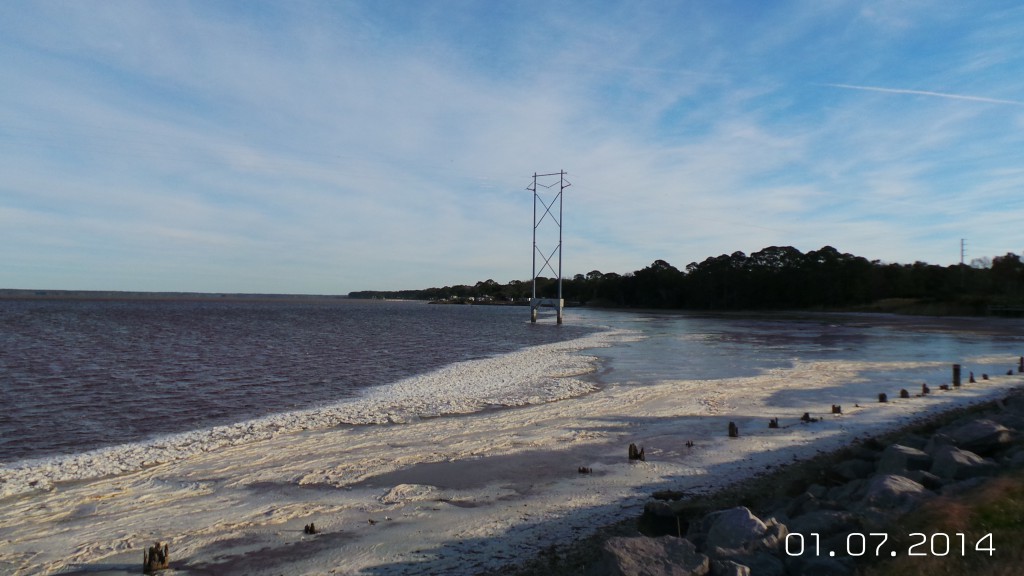With the ongoing cold weather across the Panhandle, fish kills are being reported in many areas.
In the Panhandle, average water temperatures have dropped down to the 50s (degrees Fahrenheit) in many waterbodies. This is about ten degrees cooler than in normal years. Fish have a tolerance to temperature but when air and water temperatures decrease rapidly, fish kills may occur.

Recent ice coverage in Apalachicola Bay is visible example of the harsh environmental conditions that have led to reported fish kills throughout Florida, including the Panhandle. Photo by L. Scott Jackson
Fish kills due to cold weather are naturally occurring phenomena. In some cases there may be an ecological benefit. Exotic fish species that have adapted to Florida’s subtropical climate may not be able to withstand these colder temperatures and large numbers of the populations may be eliminated. The decrease in the population of exotic species may allow for an increase in native populations.
The Florida Fish and Wildlife Conservation Commission’s (FWC) Fish Kill Hotline provides maps of fish kills throughout the state on a monthly basis. If you see a fish kill you can report it by phone: 1-800-636-0511 or online.
The FWC Fish Kill Website also allows the user to report fish kills and search the current database for fish kills by dates, county and possible causes of fish kills. (See example search below)
Your search was:
- From 12/01/2013
- To 01/24/2014
- All Counties
- Suspected Causes Cold Weather
Note: Select an Asterisked (*) Column Heading to Sort by That Column
|
||||||||||||||||||||||||||||||||||||||||||||||||||||||||||||||||||||||||||||||||||||||||||||||||||||||||||||||||||||||||||||||||||||||||||||||||||||||||||||||||||||||||||||||||||||||||||||||||||||||||||||||||||||||||||||||||||||||||||||||||||||||||||||

Above is an example of the December 2013 reported fish kill map:
There are a number of reasons for fish kills besides cold temperatures; low dissolved oxygen levels, spawning fatalities, diseases and parasites, algae blooms and human induced fish kills.
To report a fish kill to the FWC Fish Kill hotline, you will need information such as the name of the water body, whether the water is fresh, brackish or saltwater, observations of the characteristics of the water, species and number of fish that are observed (if you don’t know the species, you can check unknown), condition of the fish and if there are any abnormalities such as lesions, etc. on the fish.
If there are too many fish to count, estimate the total number by counting how many fish are in a 10’ x 10’ area, then estimate the total area that fish are present (along the shoreline and out into the water). Estimate how many 10’ x 10’ areas would fit into the total area, and multiply that number by the number of fish in the original 10’ x 10’ area. This will give you an estimate of the total number of fish.
Make a note of the weather conditions the past few days, air temperature, rainfall, cloud cover, wind strength and directions. Talk to your neighbors to determine if they have noticed anything unusual about the waterbody in the last few days.
For more information on understanding and reporting fish kills check out this publication from the University of Florida IFAS Extension:
- Explore Escribano Point Wildlife Management Area - November 19, 2021
- Team True Blue Provides Shark Data to increase NOAA Research on the Navarre Beach Fishing Pier - March 5, 2021
- Oyster Reef Mapping in the Pensacola Bay System, how is oyster reef mapping done? - January 22, 2021
